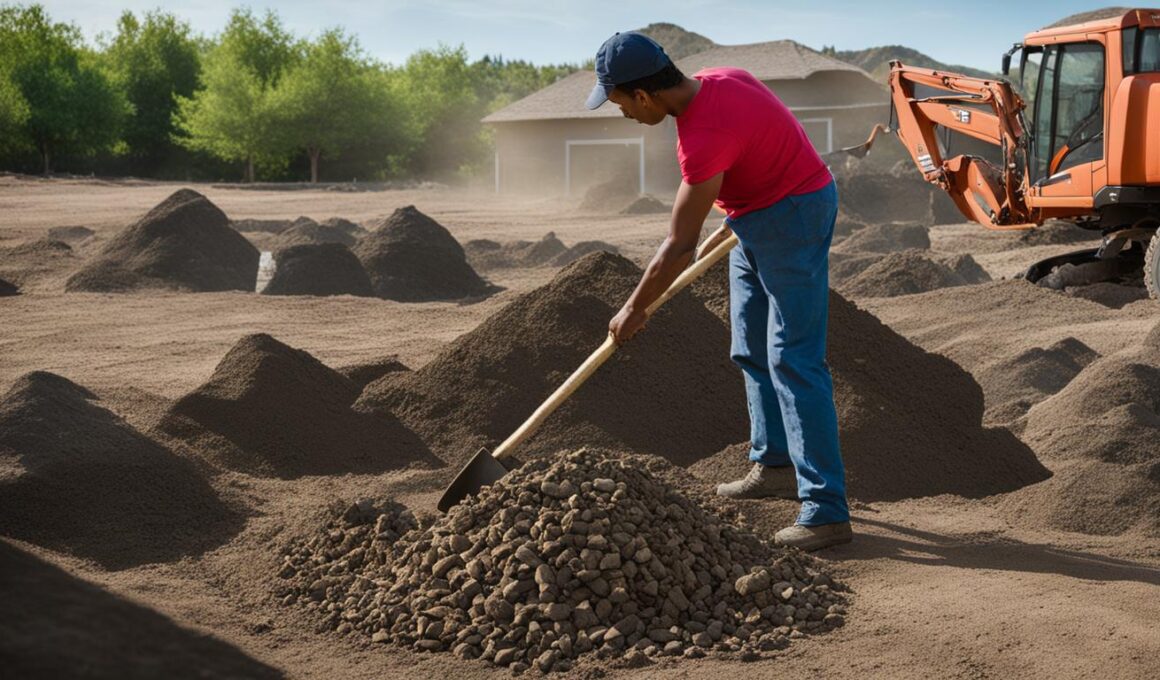Do you find yourself constantly battling with rocks in your yard? Rocks can cause various issues, from hindering plant growth to creating safety hazards while mowing your lawn. If you’re wondering how to remove rocks from your yard and regain a smooth, functional landscape, you’ve come to the right place.
In this article, we will provide step-by-step instructions on how to remove rock mulch from the surface and rocks from the soil, ensuring your yard is rock-free and ready for landscaping projects. Whether you’re dealing with small rocks or large boulders, we’ll cover the techniques and tools you need to efficiently tackle the task.
Don’t let rocks stand in the way of your dream yard. Let’s dive into the details of removing rocks from your yard and reclaiming your outdoor space!
Removing Rock Mulch from the Surface
When it comes to removing rock mulch from the surface of your flower beds or other landscaped areas, there are a few effective techniques you can use. By following these steps, you can make the task easier and more efficient.
1. Use a Rock-Screening Rake or Bow Rake: A rock-screening rake or bow rake can be your best friend when it comes to gathering the rocks into a pile. This allows the soil to sift through, making it easier to separate the rocks from the soil.
2. Lift the Landscaping Fabric or Geotextile Cloth: If there is landscaping fabric or geotextile cloth beneath the rock mulch, lifting it can make the removal process even simpler. By doing this, you can easily gather and remove large quantities of rocks.
3. Dig and Sift with a Pointed Shovel: For rocks that have worked their way into the soil, a pointed shovel can be a valuable tool. Use it to dig and move loads of dirt into a hand-held soil sifter or soil sieve. This way, you can separate the rocks from the soil and remove them more effectively.
4. Be Mindful of Rototiller Use: While a rototiller can help with removing rocks, it’s essential to exercise caution. Rocks can potentially damage the equipment, so be careful when using a rototiller for rock mulch removal.
By following these methods, you can successfully eliminate rock mulch from the surface, allowing your flower beds and landscaped areas to thrive without the hindrance of unwanted rocks.
Removing Rocks from the Soil
Removing rocks from the soil in your garden can be a challenging task, but with the right tools and techniques, it can be accomplished efficiently. One effective method is to use a rototiller to break up the soil and remove larger rocks. It is recommended to start at a shallow depth and gradually increase the tiller’s depth to avoid damaging the equipment.
After removing the larger rocks, the loose soil can be raked using a garden rake or a rock rake to separate the rocks from the dirt. This process helps to ensure that your soil is free from any obstructions that can hinder the healthy growth of your plants.
If a rototiller is not available, a digging fork can be used to loosen up the soil and grab larger rocks. Additionally, a hand trowel can be used to dig around rocks and carefully free them from the soil. These manual tools are suitable for smaller areas or when precision is required.
For those with larger yards or heavily concentrated rock areas, renting a tractor with a front loader, plow, and sifter can be a more efficient option. However, it is vital to prioritize safety and undergo proper training before operating heavy machinery.
By using the right tools and techniques, you can effectively remove rocks from your garden soil, creating an ideal environment for healthy plant growth and a beautiful garden.
Can Removing Rocks from Yard Help Prevent Small Dirt Mounds After Rain?
Removing rocks from the yard can indeed help prevent small yard dirt mounds after rainfall. Rocks can disrupt the natural flow of water, leading to soil erosion and small yard dirt mounds. By removing the rocks, you can improve drainage and reduce the likelihood of these mounds forming.










